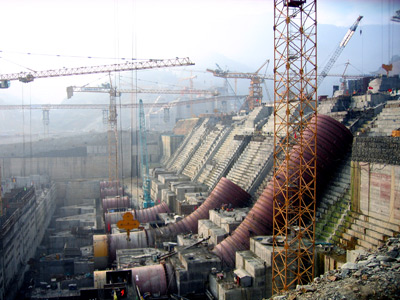Investment In Laos Remains Stable Despite Mining Halt
Growth in the investment sector has remained stable despite the government last year halting new investment proposals for mineral extraction and rubber and eucalyptus plantations.
Deputy Minister of Planning and Investment, Dr Bounthavy Sisouphanthong, told Vientiane Times on Friday the slowdown has yet to impact on the country’s investment sector.
“Although we have suspended new proposals for mining and rubber and eucalyptus plantations until December 31, 2015, domestic and foreign investment in Laos has remained stable,” he said.
“We put the brakes on these sectors because the government wants to make sure that investment projects do not create any negative environmental impacts in Laos.”
Dr Bounthavy noted that the government had not closed the door to new proposals in the entire mining sector, saying they had approved some new projects that were essential to supply certain factories, such as coal mining.
He also said the government wanted the agriculture sector to replace the losses in investment while at the same time ensuring food security.
“The hydropower and agriculture sectors are starting to slightly replace the loss in the mining sector,” he said, adding that many more businesses are interested in investing in Laos.
According to a government report, over the past six months of this year the value of domestic and foreign investment exceeded US$1.16 billion, equal to 65 percent of the plan for the year.
Out of 29 projects, investment by Lao businesses stood at US$192.2 million, accounting for 16.45 percent of the total, while the remainder were financed by foreign capital.
Investment in hydropower ranked top, amounting to US$739 million, followed by the mining sector with US$271 million and the construction sector with US$100 million.
In June last year, the government announced at a National Assembly session that it would not consider new investment proposals in mining, or rubber and eucalyptus plantations.
The move came after the government decided to review its policies and assess the effectiveness of existing projects.
At the same time it wanted to speed up the survey and allocation of land to identify which areas were suitable for future investment, and which areas should be preserved.
In the meantime, the government has set up a taskforce to look into investment projects. The committee found the approval processes required for some investment projects were unreasonably complicated, notably those undertaken by local authorities.
Investment plays a significant rol e in the development process, but has caused problems for villagers who have lost their land and livelihoods to make way for projects that exploit natural resources.
Despite fluctuations in internal and external factors, the Lao economy has continued to grow by at least 8 percent annually, driven by the investment sector.
T he government is committed to stabilising economic growth in 2012-13, with the agriculture and forestry sector accounting for 25.5 percent, industry 30.3 percent, and the service sector accounting for 38.4 percent.
Source: Vientiane Times

